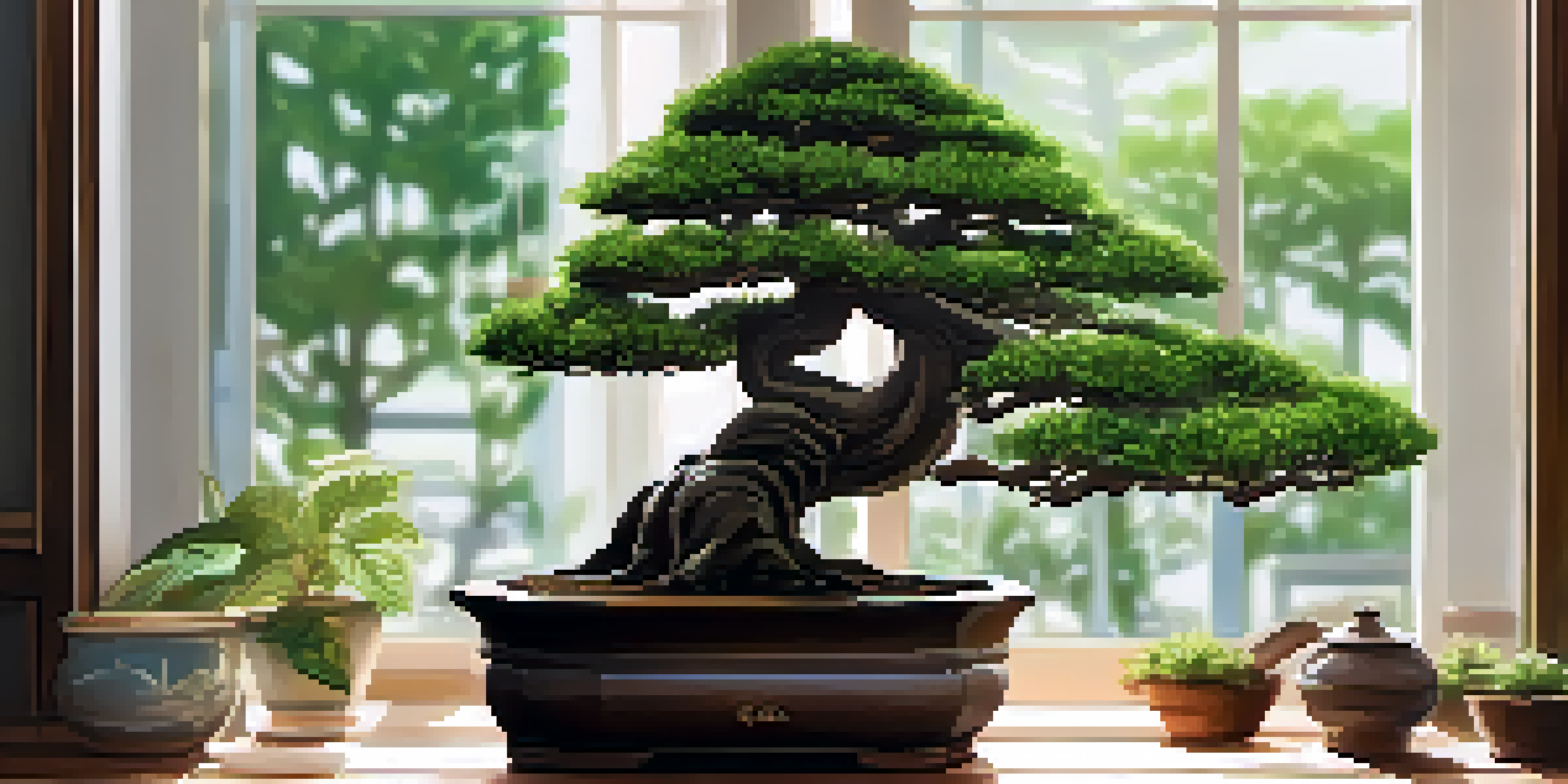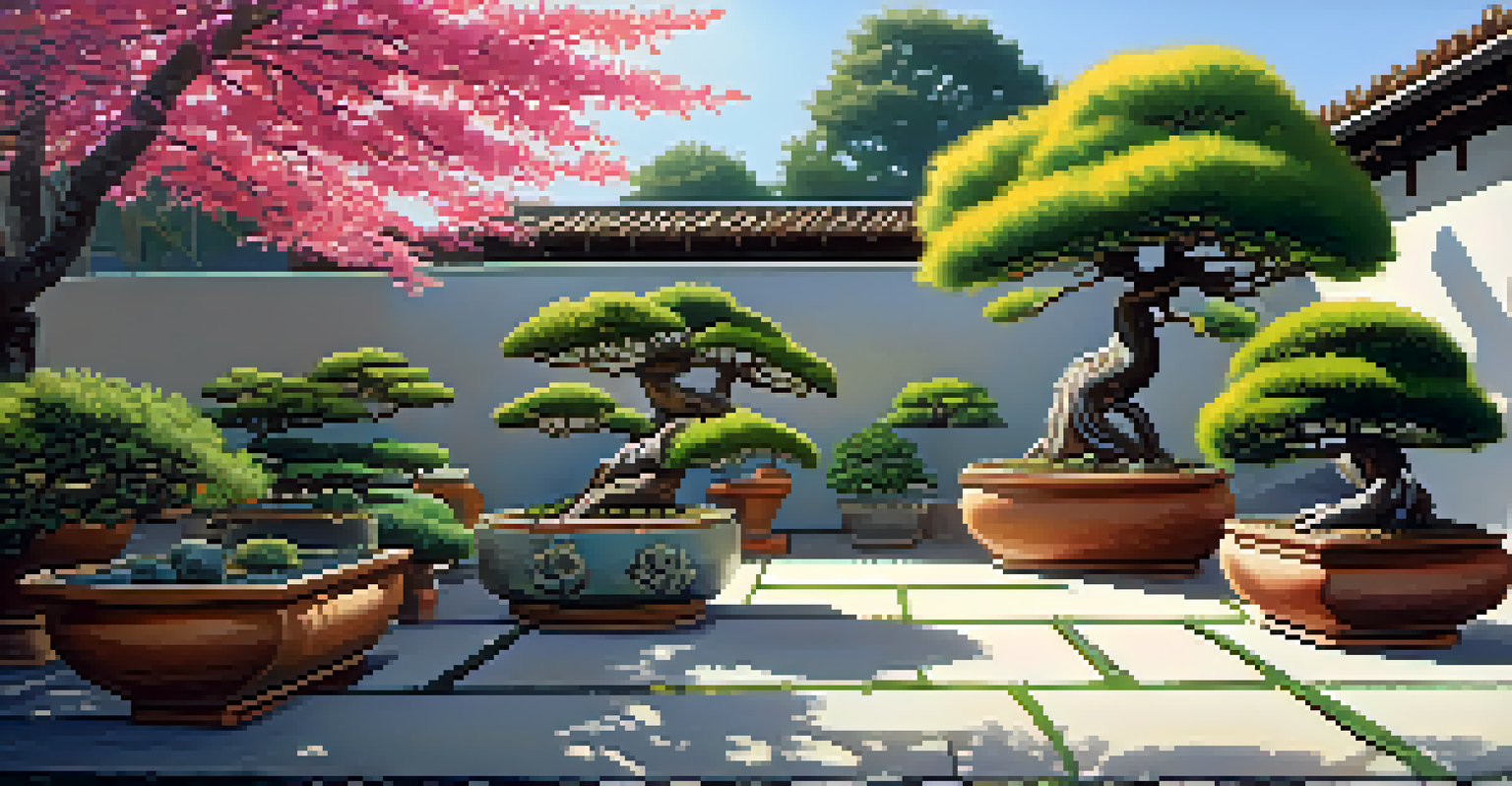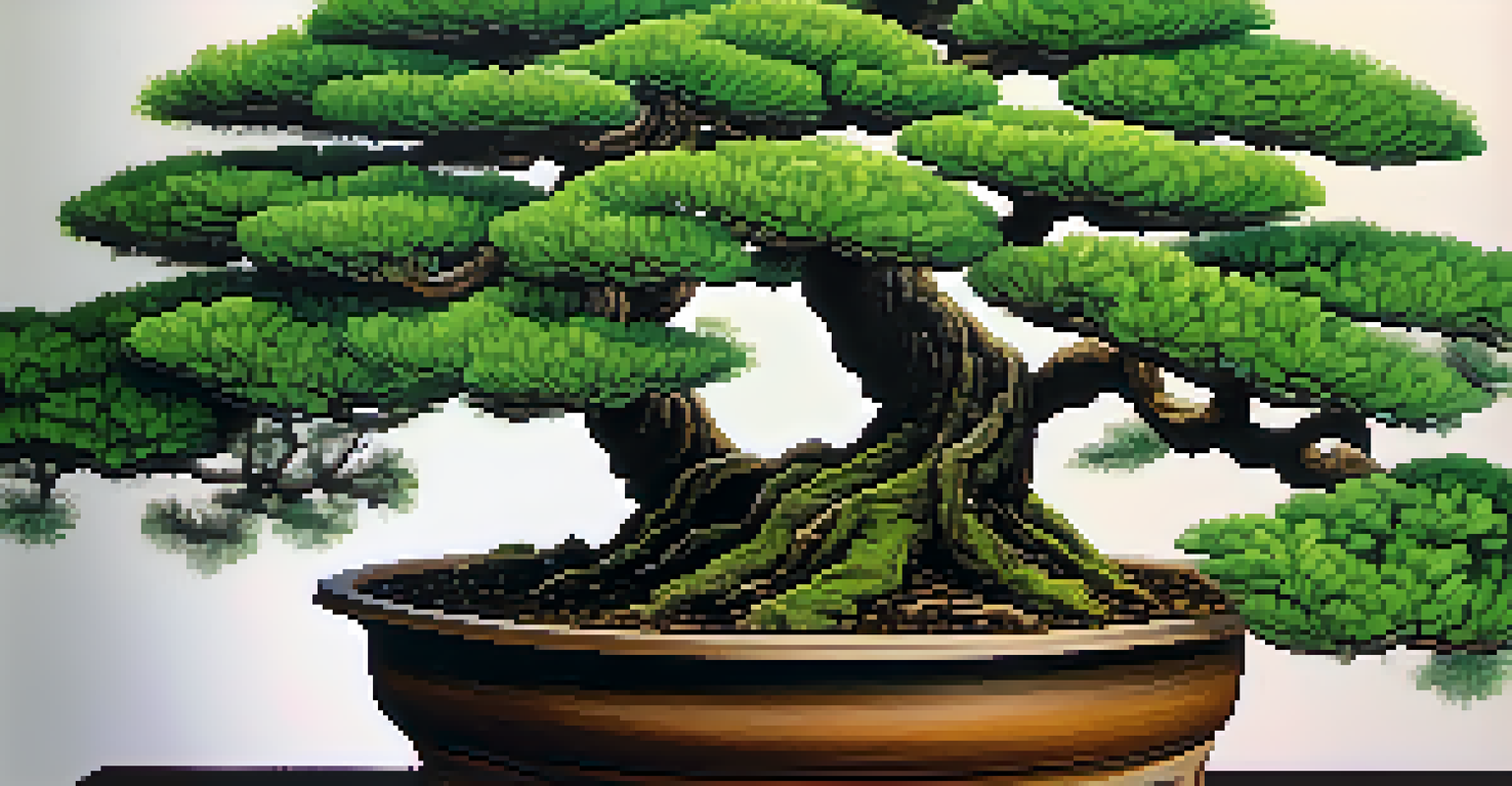Watering Your Bonsai: Best Practices for Healthy Growth

Understanding the Water Needs of Your Bonsai Tree
Bonsai trees, despite their small size, have specific watering needs that can vary significantly between species. Understanding these needs is crucial for maintaining their health and promoting growth. Factors such as the type of soil, pot size, and environmental conditions all influence how much water your bonsai requires.
Water is the driving force of all nature.
For instance, a tropical bonsai might need more frequent watering compared to a conifer that prefers drier conditions. It's essential to research the specific requirements of your bonsai species to provide the best care. This foundational knowledge will guide you in making informed decisions about watering.
Additionally, observing your bonsai's leaves and soil can give you valuable cues. Wilting leaves or dry soil are signs that your tree may need more water, while yellowing leaves can indicate overwatering. Keeping an eye on these indicators will help you master your watering routine.
Choosing the Right Watering Technique for Your Bonsai
The method you use to water your bonsai can significantly impact its health. Two popular techniques are top watering and bottom watering, each with its advantages. Top watering involves pouring water directly onto the soil surface, allowing it to absorb gradually, while bottom watering involves placing the pot in a tray of water, soaking it from the roots up.

Top watering is straightforward and allows for easy monitoring of soil moisture. However, it can sometimes lead to uneven watering if not done carefully. On the other hand, bottom watering ensures that the roots receive consistent moisture but requires a bit more setup, as you need a tray or container to hold the water.
Watering Techniques Matter
Choosing the right watering method, whether top or bottom watering, can significantly affect the health of your bonsai.
Experimenting with both methods can help you determine what works best for your bonsai. Some enthusiasts even combine techniques for optimal results. Ultimately, the goal is to keep the soil consistently moist without saturating it, promoting strong root development.
When to Water Your Bonsai for Optimal Growth
Timing is crucial when it comes to watering your bonsai. Many people mistakenly water their trees on a set schedule, but the best approach is to assess the moisture level of the soil. A good rule of thumb is to check the soil daily, especially during the growing season, to ensure it doesn't dry out completely.
The best time to plant a tree was twenty years ago. The second best time is now.
The best time to water is usually in the morning or early evening. This timing allows the water to penetrate the soil before the heat of the day causes evaporation. Watering during these cooler times also helps prevent root rot, as the soil can dry out more quickly when the temperature rises.
Additionally, seasonal changes can influence your watering routine. During the hot summer months, bonsai trees may need more frequent watering, while during cooler months, you might find yourself watering less often. Staying attuned to these seasonal shifts will help keep your bonsai healthy year-round.
Signs of Overwatering and How to Avoid It
Overwatering is a common issue that can lead to root rot and other health problems for your bonsai. One of the first signs of overwatering is yellowing leaves, which can be alarming for any bonsai owner. If you notice this happening, it’s essential to assess your watering habits immediately.
Another indicator is a mushy or soft root system, which is a sure sign that your bonsai is suffering. To avoid overwatering, always ensure that your pot has adequate drainage holes and that you're using a well-draining soil mix. This setup allows excess water to escape, preventing saturated conditions.
Monitor Soil Moisture Regularly
Regularly checking soil moisture is essential to optimize your bonsai's watering schedule, particularly during the growing season.
If you suspect that you’ve overwatered your bonsai, consider repotting it into fresh soil after allowing it to dry out a bit. This can help revive your tree and give it a better chance at recovery. Remember, it's always better to err on the side of caution; if in doubt, wait a little longer before watering.
Understanding Soil and Its Impact on Watering
The type of soil you use for your bonsai is critical to its watering needs. A well-draining soil mix is essential for preventing overwatering and promoting healthy root growth. Many bonsai enthusiasts opt for a blend of akadama, pumice, and lava rock, as these materials provide excellent drainage while retaining some moisture.
Different soil types can hold varying amounts of water, which affects how often you'll need to water your bonsai. For instance, a soil mix that retains too much moisture can lead to root rot, while a mix that drains too quickly may require more frequent watering. Understanding your soil composition will help you adjust your watering schedule accordingly.
Moreover, as your bonsai matures, you may need to refresh its soil every few years. This refresh not only replenishes nutrients but also improves drainage properties. Regularly assessing and maintaining your soil quality is a vital part of successful bonsai care.
Adapting Your Watering Routine to Seasonal Changes
As the seasons change, so too should your watering routine for your bonsai. During the spring and summer, when the tree is actively growing, it will typically require more water to support its lush foliage. Conversely, in the fall and winter months, your bonsai may enter a dormant phase, leading to decreased water needs.
Monitoring your bonsai's environment is key during these transitions. Factors such as temperature, humidity, and sunlight exposure can all influence how quickly the soil dries out. For example, a warm, sunny windowsill may require daily checks, while a cooler, less sunny location might allow for longer intervals between watering.
Seasonal Adjustments Required
Adapting your watering routine to seasonal changes ensures that your bonsai receives the appropriate amount of water throughout the year.
Adjusting your watering routine to reflect these seasonal changes helps ensure that your bonsai remains healthy and vibrant. Being observant and responsive to these shifts will make all the difference in your tree's growth and overall well-being.
Tools and Tips for Effective Bonsai Watering
Having the right tools at your disposal can make watering your bonsai a much more effective process. A fine-mist spray bottle or a watering can with a narrow spout is ideal for delivering a gentle, even flow of water to your bonsai. This ensures that you can reach all areas of the soil without flooding the pot.
Additionally, using a moisture meter can be a game-changer for beginners. This handy tool allows you to measure the moisture level in the soil, taking the guesswork out of watering. With a moisture meter, you can determine exactly when your bonsai needs water, leading to a healthier tree.

Lastly, don't forget the importance of patience and observation. Every bonsai is unique, and learning to read your tree's signals will come with practice. Take notes on your watering habits and the tree's response, and you'll soon develop a keen sense of when it’s time to water.